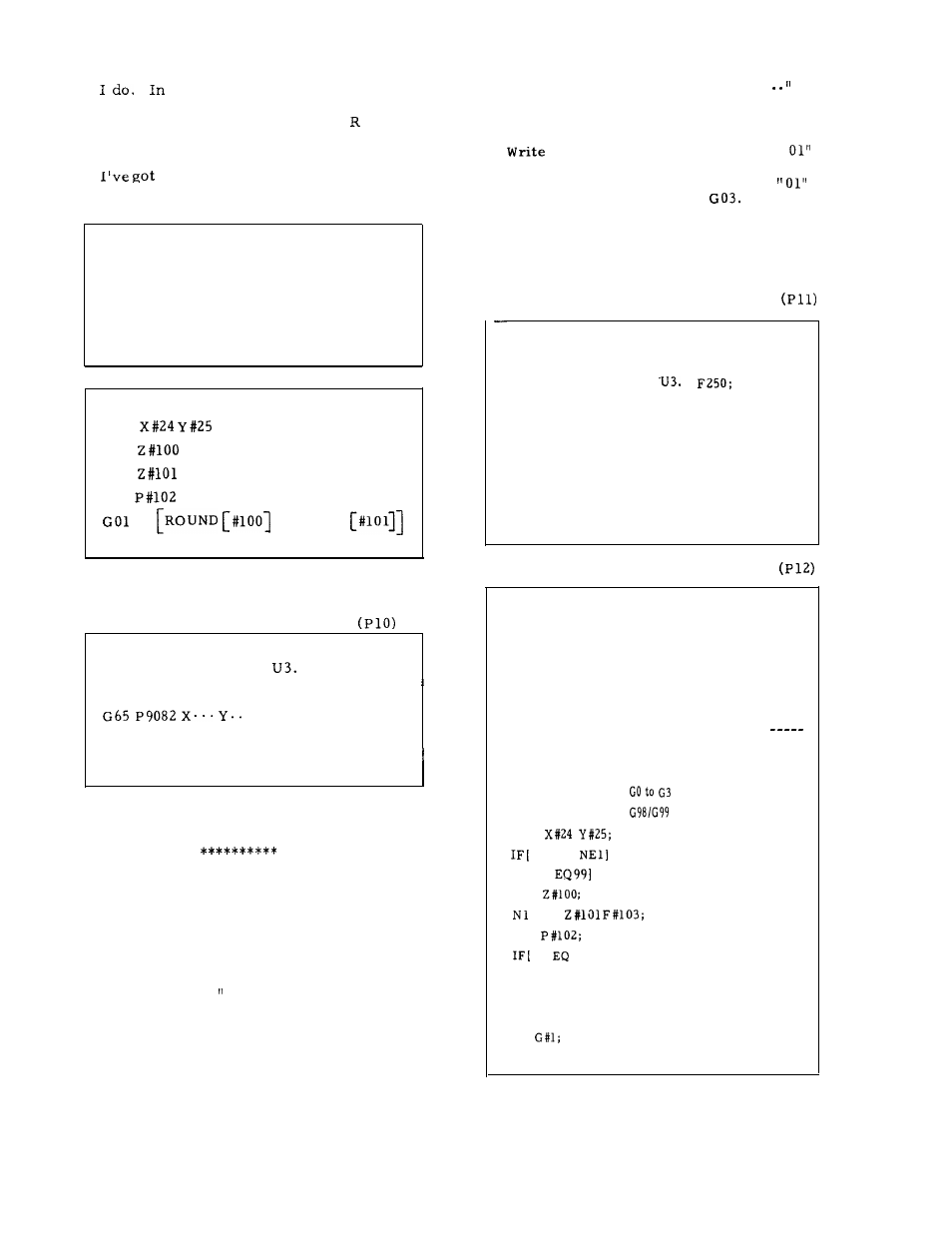Yaskawa J50M Instructions User Manual
Page 125

T:
such a case, common variables help.
Using common variables, write the macro to
designate the position of points
and Z. u
and F may also be used for the same purpose.
s :
it! Now, I divide the macro body
into two parts as follows:
(P8)
09000 ;
#loo = #18 ;
#101 = #26 ;
#lo2 = #21 ;
#lo3 = #9 ;
M99 ;
T :
s :
T :
s :
(P9)
09082 ;
GOO
;
GOO
;
GO1
F103 ;
G04
z-
+
R O U N D
;
M99 ;
and I write macro call as follows:
G91 ;
G65 P9000 R-80. z-40.
O F250. ;
G65 P9082 x1OO. Y50. ;
. ;
Very good.
Wait a minute! This canned cycle always re-
turns to the initial point.
I
also
overlooked it.
A program would be
useless if it is not able to designate the
initial point return ( G98) and point-R return
G99) .
To solve this problem, use the system
variable called current value of modal in-
formation command” to know which state, G98
or G99, is provided, and change the specifi-
cation of the tool return destination,
G98 and G99 belong to group “IO. ” So, I
have to use system variable #4010. Is it
right ?
T :
s :
T :
Y e s .
Then, using “IF . . . GO TO . com-
mand, change the specification of the tool
return destination.
There is one more point to be improved.
the program so that the group “
G
codes before execution may be retained after
the execution of this macro. Group
G
codes include GOO through
It looks difficult . . .
What would you say to the following program?
Well done !
Macro Call Program
G91 G99;
G65 P9000 R-80. Z-40.
O
G65 P9082 X1OO. Y50. ;
G65P9082X.. .Y. ..;
G98;
G65P9082 X.. .Y. ..;
User Macro Body
09000;
#100 = #18;
#101 = #26;
#lo2 =
#21;
#lo3 = #9;
#lo4 = o
-----------------------------------
09082;
#lo4 = #lo4 + 1
#1 = #4001; . . .
#2 = #4010; ., .
GOO
#104
GO TO 1;
IF[ #2
GO TO 2;
GOO
GO1
G04
#2
98] GO TO 2;
GOO 7-[ #101]
GOTO 3;
N2 GOO Z-[ ROUND [ #100] + ROUND [
#10111 ;
N3
. . . Restore G Code
M99;
117